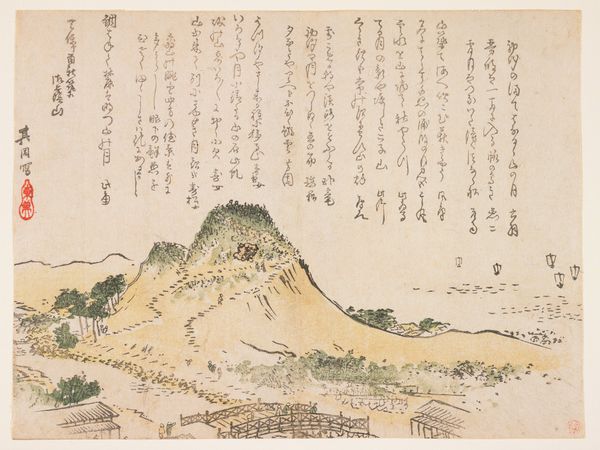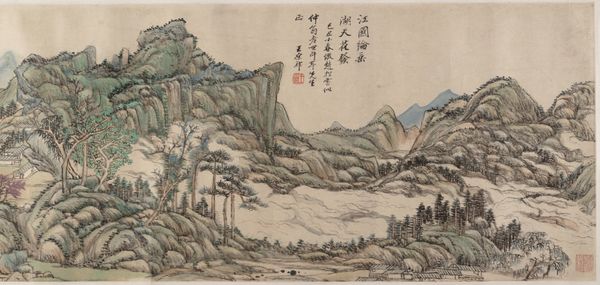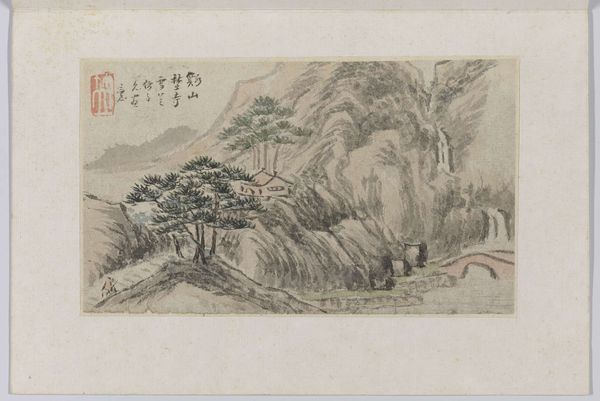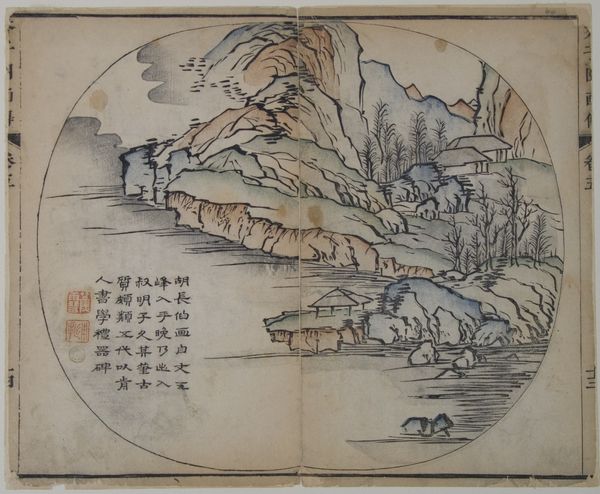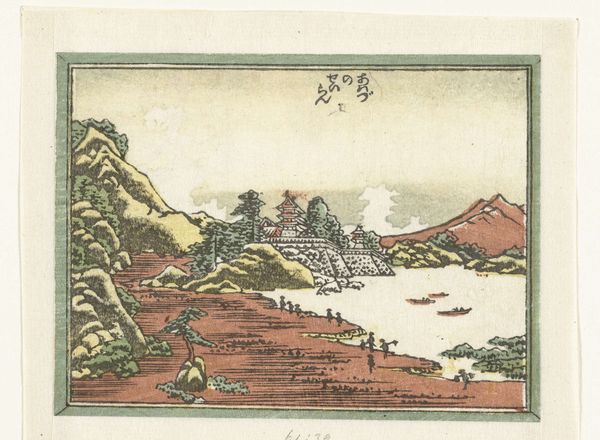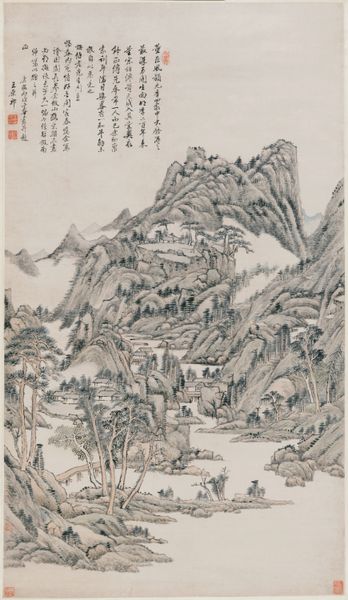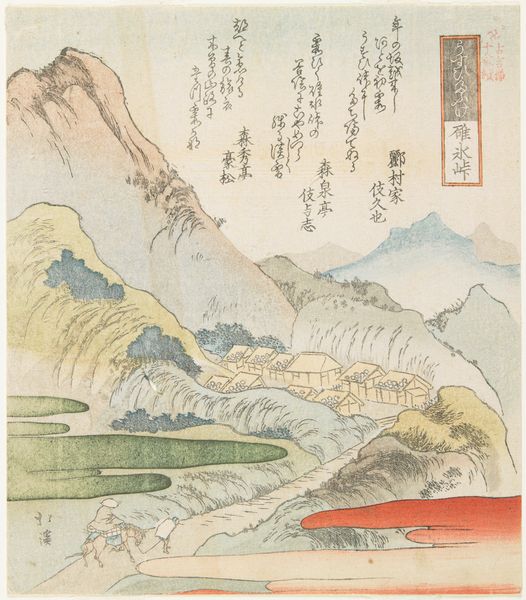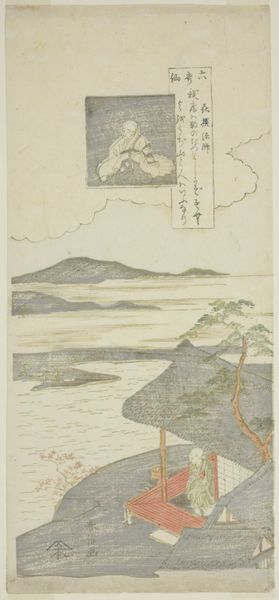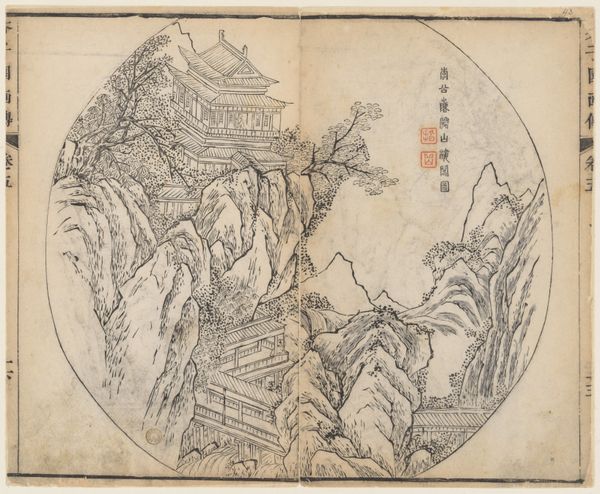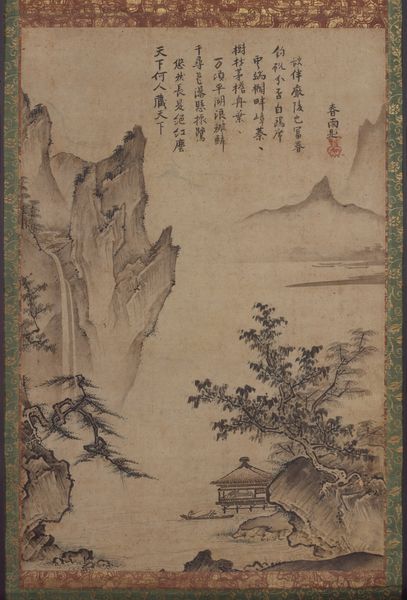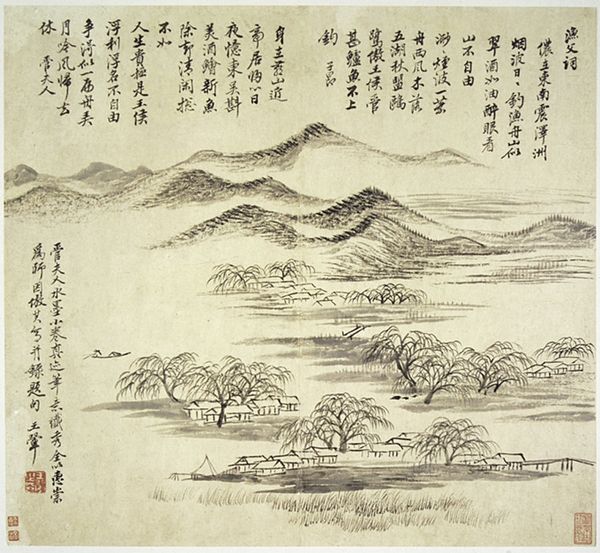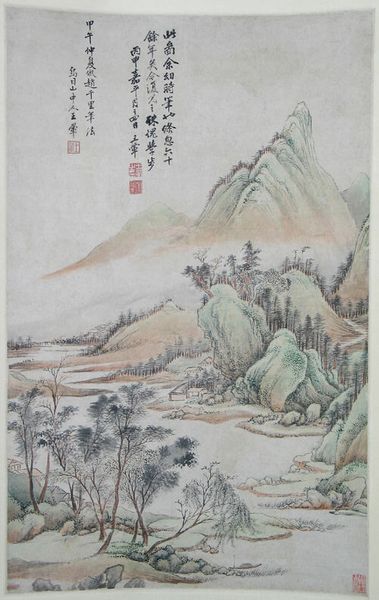
print, woodblock-print
# print
#
asian-art
#
landscape
#
ukiyo-e
#
woodblock-print
Dimensions: height 208 mm, width 182 mm
Copyright: Rijks Museum: Open Domain
Curator: This evocative print is by Totoya Hokkei, created in 1821. The Rijksmuseum calls it "The Shrine of Benten on Chikubushima Island." As an ukiyo-e woodblock print, it offers a window into a complex layering of social and spiritual contexts. Editor: It has such a delicate and contemplative feel, doesn’t it? A quiet energy emanates from that isolated shrine nestled amidst the rocky terrain. Curator: Absolutely. Benten, the goddess enshrined here, holds a significant position in Japanese culture. She's a syncretic figure, absorbing elements from both Shinto and Buddhist traditions. Often associated with music, eloquence, wealth, and even warfare, her multifaceted nature reflects the diverse roles women occupied in Japanese society, wielding influence in ways that were often indirect or veiled. Editor: The composition also speaks to this idea of hidden power. We see the torii gate, the red shrine building—markers of sacred space—but they're almost swallowed by the natural landscape. It speaks to a subtle but persistent cultural memory, like an enduring seed of meaning in the collective consciousness. I think even the inscription, framing the island and structure, ties the goddess' symbolic attributes directly into the ukiyo-e landscape itself. Curator: Indeed. Ukiyo-e prints were circulated among the common people, not the elite. In its own way, this image of a shrine is accessible, placing the feminine divine within the everyday world. Perhaps Benten's varied portfolio of attributes—from wisdom to protection—was meant to appeal to all viewers regardless of social status. We also might see the island and torii in this compressed composition as something subtly aspirational, or as the quiet affirmation of feminine influence. Editor: Thinking about this layering, it seems the image invites us to consider how visual symbols like this, imbued with rich histories, constantly adapt and accrue meaning in the course of time. Benten represents a remarkable constellation of cultural values. Curator: Hokkei gives us a rich depiction to consider the enduring relationship between spirituality, landscape, and cultural identity. Editor: It leaves one to ponder not just the artistic skill involved, but the weight of symbols in shaping human experiences.
Comments
No comments
Be the first to comment and join the conversation on the ultimate creative platform.
